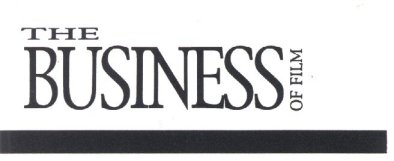|

MAY 2009
|
|
|

|
LIGHTS, CAMERA, ....RECESSION?
In
his annual article for The Business of Film during the Cannes Film
Festival, Greg S. Bernstein looks at the impact of the recession on the indie film industry.
|
|
Greg
S. Bernstein
|
They say the film business is recession proof, but they
certainly never considered anything like the current recession, nor thinking
about indie films. While the studio box office is increasing, all is not good for
film.
As we hear on the news, US box office is up this year. But
that is misleading, especially for indie films.
Most pundits point to this
increase in box office as historical in recessions, as with more people going
to the theater to escape their worries.
They then conclude that the film business fairs in tough times. But if
that is the case, why then are all the studios cutting back on their film
production, closing divisions and letting staff go? Why then are indie films not selling, even at
deep discount prices? And why is it that the financing for indie films has
dried up, if films are such a good investment in tough times?
Most of us forget that box office today only amounts to a
little more than 20% of a studio film’s gross revenue, and accounts for a
substantial net loss when you weigh the share of box office the distributor
receives to the releasing costs. Theatrical, for the most part, is a losing
venture, and has become just a big promotion for DVD and other distribution
streams. For most indie films,
theatrical is generally even a smaller portion of total revenues. Statistically, only a handful of indie films
released each year have any level of theatrical success. And the roster of
potential theatrical distributors of indie film has shrunk significantly in the
past year, making it even harder to even get a decent theatrical release. Not only have the studios cut their releases
slates and pretty much stopped buying indie films, they have also closed or
reduced the operations of their indie film divisions. Further, many of our favorite indie boutiques
have closed are rumored to be close to closing.
But if theatrical is up for the studios, should not other
revenues? Not quite. For the studios,
video has been the largest revenue, and profit, generator, accounting for more
than 50% of average revenue. Yet while studio
box office has been growing, DVD sales are down substantially in this year,
with consumers deciding to forgo that luxury in these tough times (while rental
is up, not all rental is shared with the distributors, and as far as film
revenue goes, it’s not up enough to make up the decline in DVD sales). We
have seen Blockbuster rumored to be close to bankruptcy, and many retailers and
distributors of videos around the world closing or going bankrupt; with those
closures and bankruptcies having a ripple effect up the film distribution food
chain.
TV, which on many indie films account for a disproportionate
share of indie film revenue, has been hit the hardest. Most TV is ad supported, whether basic cable
or broadcast. Even much of today’s internet based programming is ad
supported. When there is a recession,
one of the first things a company starts to cut is its marketing budget. And that means not buying as many TV ads. If the TV networks are not earning as much in
revenues, they start to cut back on their programming acquisitions (pay less
for what they do buy, and buy a lot less, rerunning programs that they already
have under license to save money). And
that has been the case worldwide. Ad revenues are down significantly. And so too is program (film) buying.
If selling your indie film was not bad enough, getting it
made (financed) is harder than ever. Equity,
bank financing and soft money have been the key components to indie film
financing the past few years, and all are suffering from the recession. Many banks have closed their film lending
divisions, not necessarily because they were unprofitable or had big losses,
but because lending on film appears risky to management, and when it comes to
trimming costs, since the film lending divisions tend to be a very small
component of a bank’s operations, it’s an easy one to cut. Even those lenders that retained their film
lending practices have, as banks have overall, cut their lending out of caution.
Very few banks are doing any gap, and many have not made many, or in some case
any, traditional presale loans over the past 6-9 months.
Many states and other governmental agencies have had their
budgets slashed as tax revenues have fallen, resulting in no funding, reduced
funding or freezing of the film production incentive programs. And with
investors having lost fortunes in the stock and real estate markets, they are no
longer willing to risk their capital, if they still have it, on film.
And what if you are able to pull the financing together, will
the film markets be better in six months or a year? Assuming the economy rebounds
in late 2009 or early 2010 as anticipated, with so many films currently in the
market now vying for sales, the excess supply is not likely to dissipate in the
short run, so while demand might increase, the supply will keep prices low for
the foreseeable future. Generally, it
would take 6 months to a year of good demand for product before prices start to
rise. So that means we could be looking
at Fall 2010 or Spring 2011 for any significant change in indie film sales.
So what does an indie producer do? Close shop? You could not call yourself an indie producer
if you took that attitude. Indie
producers are resilient, patient, and determined. The current market may mean putting aside
that passion project for the time being, sucking up that ego about your film
going “theatrical,” and going back to bread and butter productions. With the theatrical market limited and DVD
retrenching, the only current active (relatively safe) area is original
programming for TV (telefilms commissioned , not bought after the fact as a
finished film). Most of the cable and
broadcast networks in the US and Europe are still commissioning original movies,
albeit with producers that they have worked with in the past, and a little
tighter on how much they will spend. By
keeping the deficit down, making use of production incentives to further reduce
net cost, and partnering on a co-production, official or not, to cover most, if
not all the cost of production is the current formula. It’s not very exciting,
a lot of work to pull it altogether, and there is not much profit in films like
this, but at least it will keep the lights on till the storm blows over.
****
Reprinted with permission by The Business of Film
Law Offices of GREG S. BERNSTEIN, A Professional
Corporation
9601 Wilshire Boulevard, Suite 240, Beverly Hills,
California
90210-5288.
Phone: (310) 247-2790; Fax: (310) 247-2791; Internet: www.thefilmlaw.com

